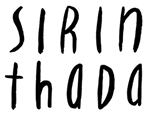A little watercolor painting inspired by millefiori glasswork! Timelapse below:
While we typically associate millefiori with Venetian glass, in fact the art of these layered mosaic beads can be traced back to Ancient Roman, Phoenician and Alexandrian times. Here are some lovelies from the Roman era, courtesy of the Metropolitan Museum of Art:
Source: Metropolitan Museum of Art.
To get that organic layered feel, I practiced my wet-on-wet skills, using Dr. Ph. Martin’s radiant concentrated watercolor. I often use a mix of liquid acrylics, acrylic gouache, and watercolor—which means some layers are permanent, while others can be reactivated with water. And that can lead to some nice bleeds, runny colors, faded spots… I love that element of unpredictability, of the work having a life of its own!
First I lay down a light wash of acrylic ink in raw sienna, to give a warm cast to the whole illustration. Next, I used my Neocolor crayon in beige, to very lightly block out different garden “sections.” I wanted to make sure there was a nice variety of both big and small “plots” of flowers, so it helped to decide that beforehand (and since the crayons are water-soluble, the outlines just melt away beautifully into the painting when activated with water.) The rest was just done on the fly. Some dots of rubbing alcohol help create that cool dotted effect, and acrylic Posca paint markers came in handy when I decided to throw in a black cat at the very last minute!
Full material list:
Canson XL watercolor paper
Princeton Umbria Round 2 brush (I reach for this brush the most)
Liquitex Acrylic Ink in transparent raw sienna (for the background wash)
Caran D’Ache Neocolor II Aquarelle wax pastel crayon in beige
Dr. Ph. Martin’s radiant concentrated watercolor in Slate Blue, Daffodil Yellow, Cyclamen, Ice Pink, Olive Green, and Sepia
Rubbing alcohol (so fun for creating cool resist effects with watercolor! Use an old brush for this—alcohol is very harsh on the bristles!)
Posca paint markers in black and white


